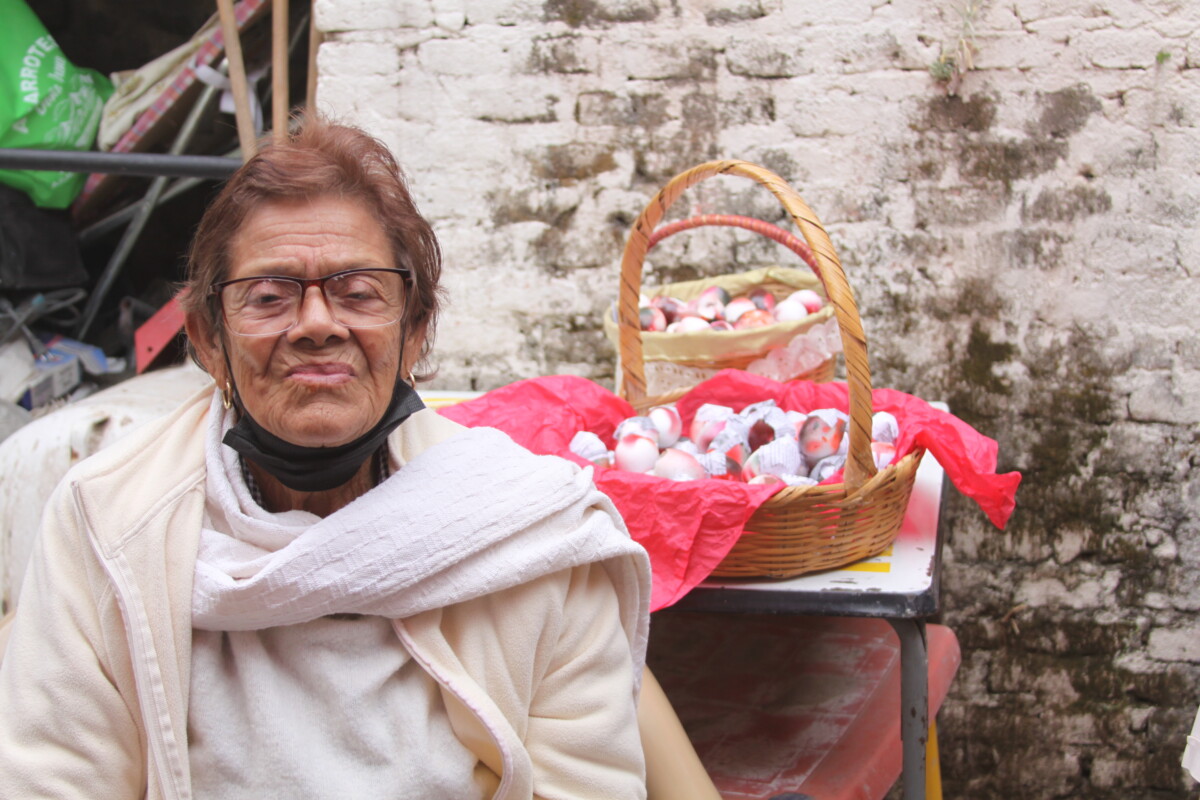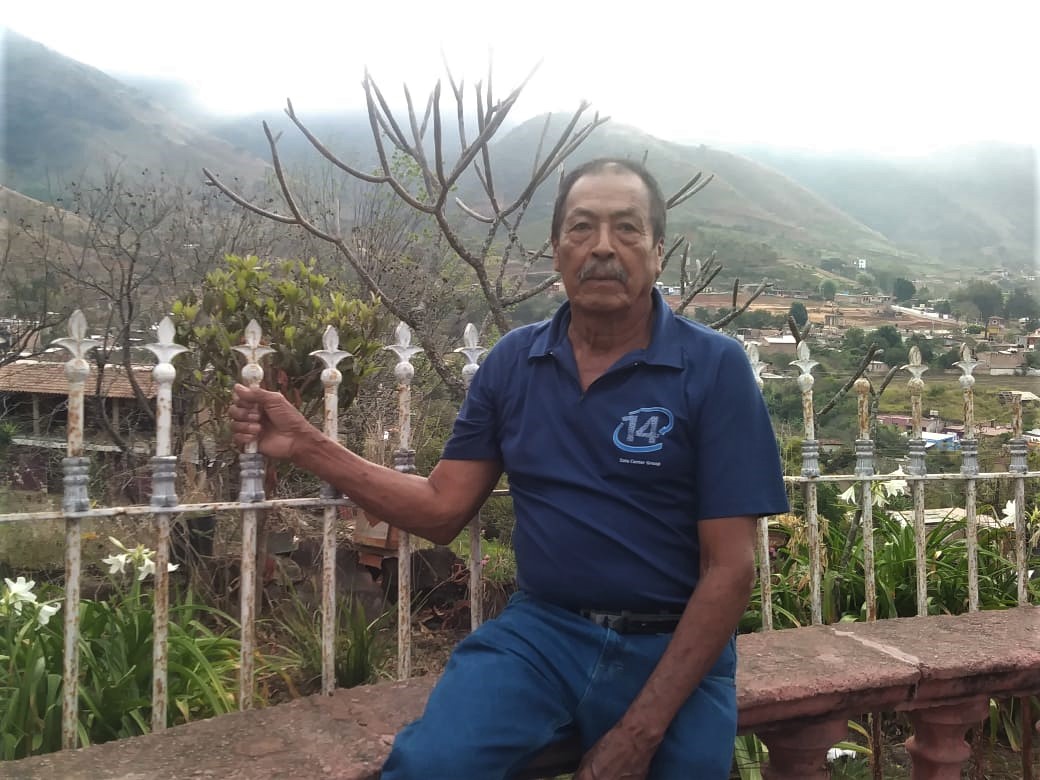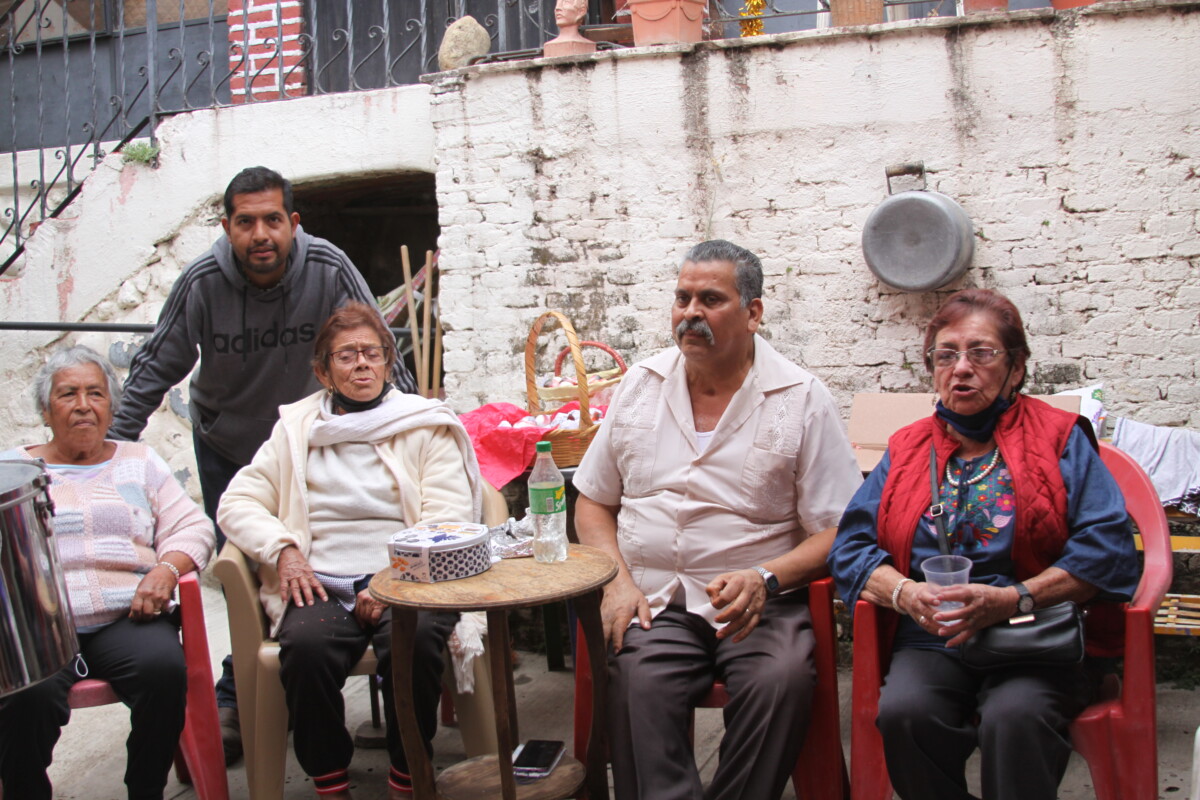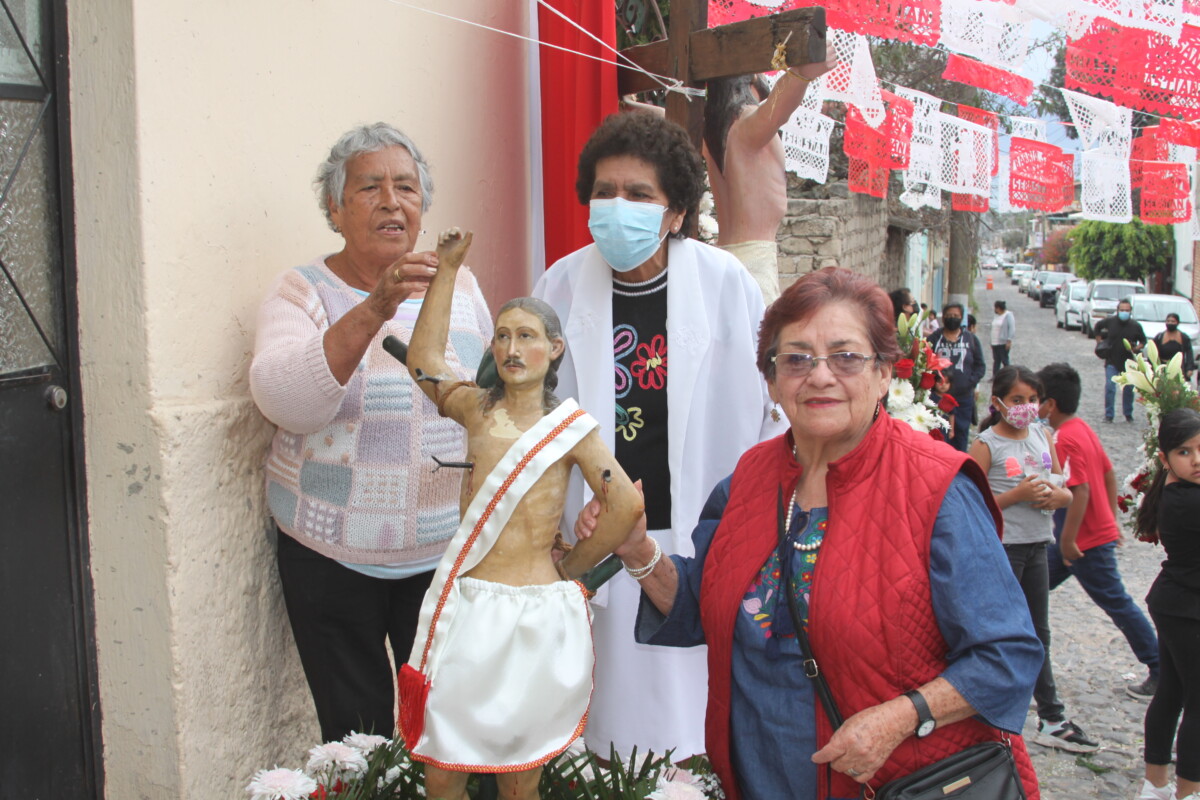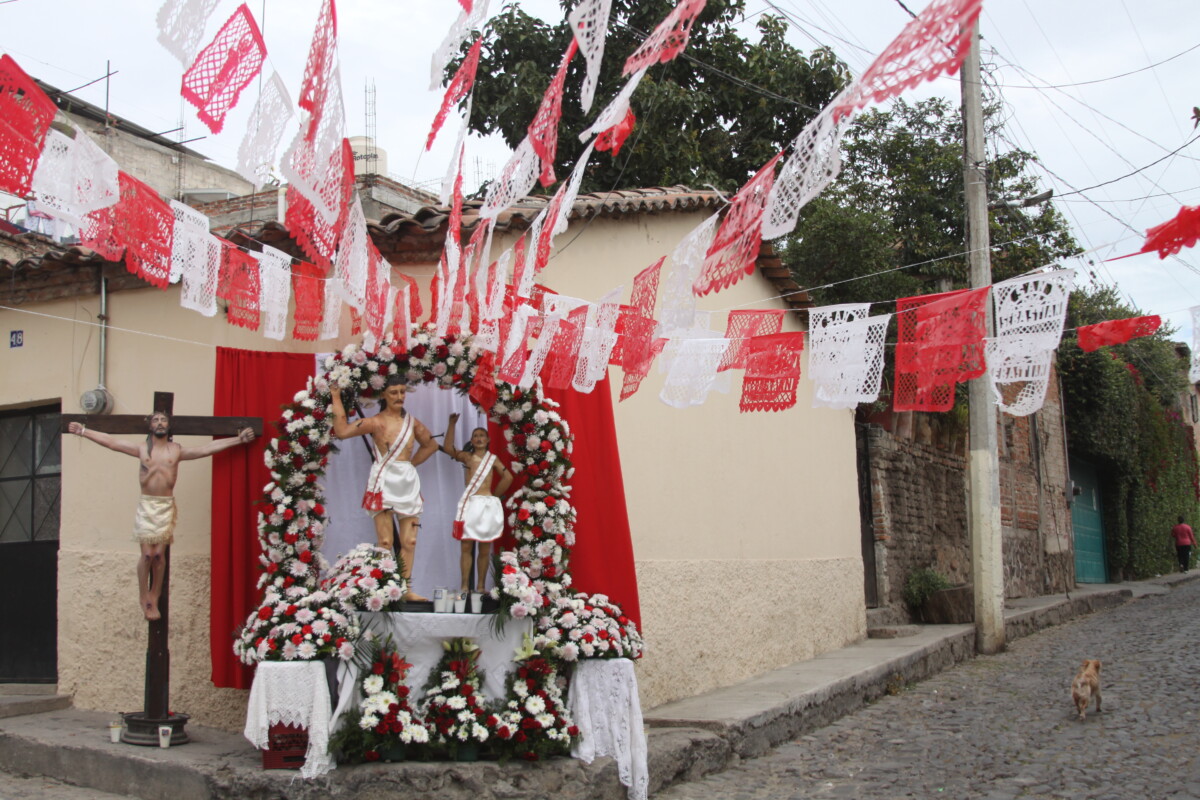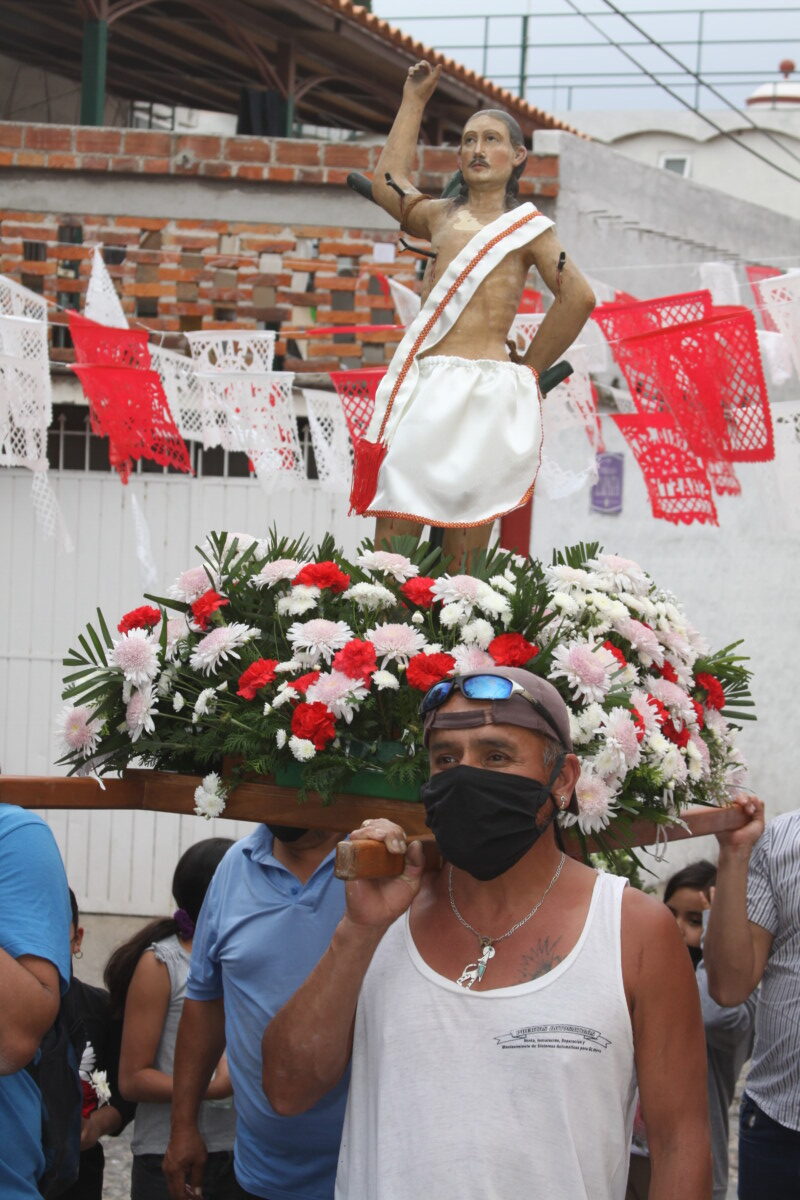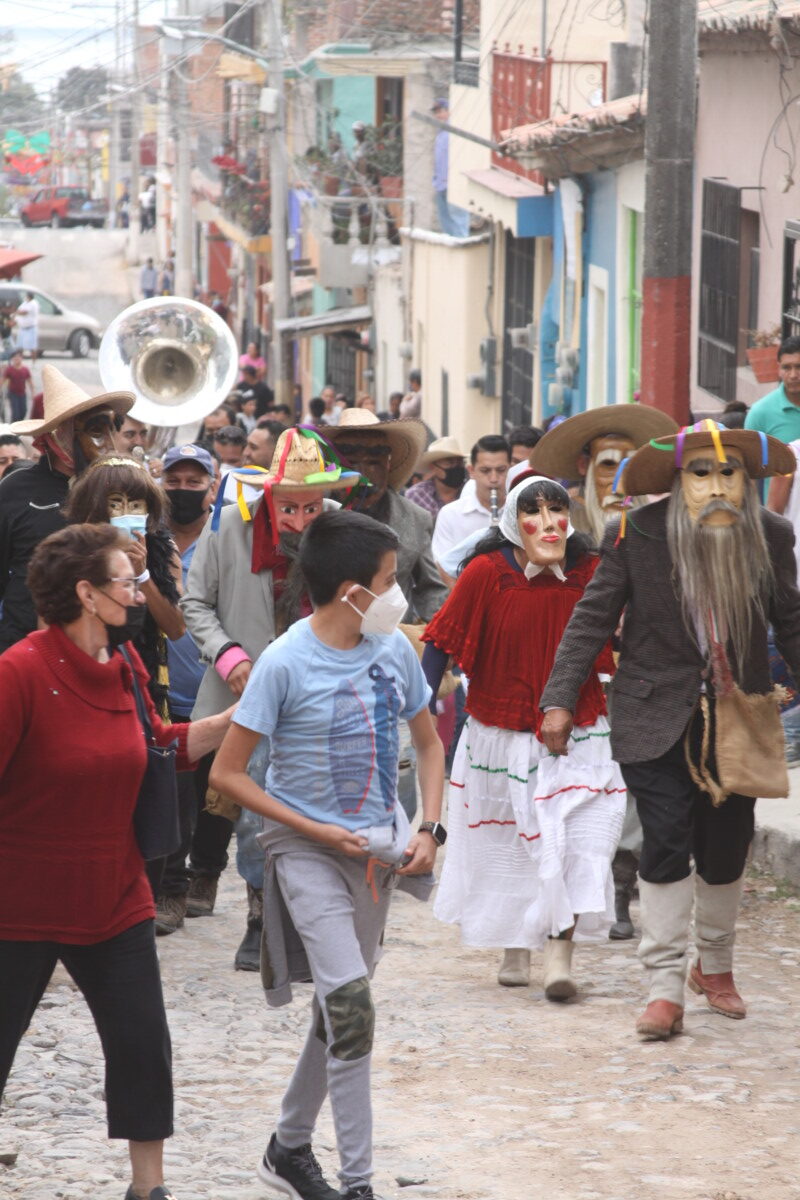Lakeside Chronicles: The feast of San Sebastian
Between fervor and revelry, the feast of San Sebastian
Doña Irene prepared the eggshells with confetti weeks before
María del Refugio Reynozo Medina (Ajijic) – January 20 is the most awaited day for the devotees of San Sebastian.
Doña Irene is 82 years old. As a child, she accompanied her parents to the celebration of San Sebastian. She has lines of time on her face; most of them are hints of a smile, because Doña Irene smiles a lot. Her chatter is a contagious melody. She welcomes the visitor as if she had seen him yesterday and as if she already knew him. “Let’s have a little refreshment,» she says. Her conversation invites you to stay and contemplate the afternoon by the cobblestone street.
Although now it is not like other years, she is looking forward to the feast of San Sebastian with joy and she is providing almost 30 chickens for the mole.
Irene Martínez Cervantes lives in the San Sebastián neighborhood in Ajijic.
She remembers her parents’ veneration for the patron saint San Sebastian, whom they celebrated every year on January 20. Her family used to organize this celebration and she decided to continue it, despite the Covid-19 pandemic restrictions.
Seventy-five-year-old Don Antonio Arceo, another of the organizers, follows the tradition of his ancestors. He remembers that in the past, the sponsor of the festival was by invitation.
Two or three months before the festival, those who had been in charge the previous year would select another person to continue the tradition. The previous organizers would visit the new person, bringing a carafe of tamarind or pomegranate punch as a gift. They would bury the tightly closed punch for up to two months and add pieces of quince when it was unburied. When the drink was ready, the new sponsor agreed to assume the responsibility of covering the expenses of the drink, the food, the music and the tachihual bread (a traditional bread loaf). The new sponsor recruited ten to twelve people to help him. The following year he would make the same invitation to another acquaintance.
A handshake, a shared drink of punch and a word as a guarantee was enough to close the commitment. So says the song that is engraved in the memory of the faithful, by dint of repeating it every year during music and confetti.
This charge I give them
to those who remain.
So that they never forget it
and that they pay for it.
Weeks before January 20, Doña Irene starts to paint eggshells and fills them with confetti for the papaqui (the throwing of eggshells and confetti to the rhythm of the song of San Sebastian) That is why one of the mischievous stanzas says:
Poor San Sebastian
who never knew underpants.
The first ones he bought
he exchanged them for eggshells.
On the day of the procession Doña Irene is sitting inside the courtyard with some of her co-workers and close friends. She watches with pleasure the parade of men, women and children who come for the plates of food. Women and children carry towers of plates of mole, beans and rice to their homes. Some men take their rations and packages of tortillas to eat sitting on the sidewalks.
At the corner of Emiliano Zapata and Marcos Castellanos streets sits the altar to San Sebastian. There are two figures. The smaller one measuring approximately one meter and brought from the church the previous day. The other is one about a meter and a half that Doña Irene had sculpted. They are in the middle of a large arch of red carnations and chrysanthemums, on a table covered with white tablecloths.
“There are few people now,» says one of the attendants. Before the pandemic, food was served at tables set up along the street, and casseroles with rice and mole accompanied the procession.
Music has been playing since last night at San Sebastian. Not just one band, «it’s a group,» a young man tells me. Members of different bands come to play for the patron saint.
One woman and seven men make up the cast to liven up the procession. After three o’clock in the afternoon, they begin to prepare the small wooden platform where the smallest sculpture of San Sebastian, loaned from the parish, will be placed. He has starred in the festival for as long as they can remember.
Saint Sebastian is shown with one arm backwards tied to a pole and the other bent towards the heavens. His right index finger is missing. He has a taciturn look, curly shoulder-length hair, a mustache, thin outlined eyebrows and a cracked chest and arm. Five arrows are embedded in his body, which, according to the history of the saints, recall the rain of arrows he received in his martyrdom.
Doña Irene approaches with her companions to see him off, they surround him and talk in his ear, because he will not visit them again until next year. Little by little about 50 people arrive. The band begins to play. Suddenly the first sayaco (traditional, cross-dressing, masked characters who throw confetti or flour) appears wearing a work shirt, khaki colored jacket, boots, hat, and a backpack. He wears a long raw-colored wooden mask, from his cheeks emerges a long beard, bushy eyebrows and a straw-colored mustache.
Six more sayacos arrive dressed as exotic women. One of them, aided by a pair of balloons, shows off her bulging breasts under a flowered blouse. Another wears a blouse of gold and black threads with a tiara of sequins. The youngest sayaco looks like a teenaged girl wearing a scarf over her crimson-plated mask and a black dress edged with blue lace. She stomps her booties on the uneven streets.
The sayacos lead the procession dancing and waving their circular skirts non-stop, followed by the band. The sculpture of San Sebastian follows, carried on the shoulders of four men. As it passes through the elementary school, the students come out to watch through the entrance gate. The sayacos bring their masks close to the gate while the little ones laugh.
San Sebastian is returned to the parish amidst cheers and applause. The sayacos do not enter the temple and they wait outside to return in procession with the music of the band.
Now the Sayacos are the absolute masters of the parade, they take out fists of confetti from their backpacks to throw at the women. Up on a balcony a little girl hides between her mother’s legs, a sayaco jumps to scare her, the little girl cries and the woman laughs and hugs her. A group of about 30 children taunt the sayacos, run and urge them to chase them. Upon their arrival in the heart of the neighborhood outside Doña Irene’s house, the music continues to play and the Sayacos dance a little. Less than 30 attendees begin to break shells filled with confetti on their heads while the music plays. There Bertha Baron intones with two accompanists the traditional song to San Sebastian.
Say goodbye to the meat
and also to the sausage.
Because Ash Wednesday is coming
Ash Wednesday is coming.
And so, ends this celebration in which many collaborate, where adults play like children in a rain of confetti, all singing the traditional, fervent and irreverent song.
Translated by Nita Rudy
Los comentarios están cerrados.
© 2016. Todos los derechos reservados. Semanario de la Ribera de Chapala


